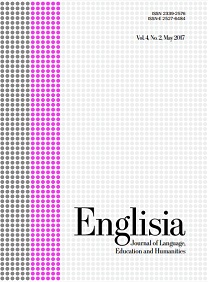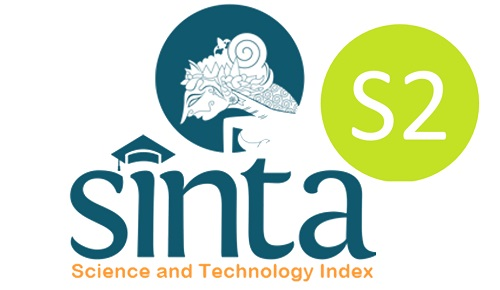Exploring the role of online machine translation in language classrooms: Indonesian EFL learners’ views and practices at Islamic university
DOI:
https://doi.org/10.22373/ej.v12i2.26914Keywords:
EFL learners, Islamic university, Online Machine TranslationAbstract
The integration of Online Machine Translation (OMT) into English as a Foreign Language (EFL) classrooms has ignited discussions about its practical use and ethical implications, particularly in Islamic universities where academic integrity is a core value. This study investigates the role of OMT in language instruction, explores Indonesian EFL learners’ perspectives on its use, and identifies strategies to address the challenges it presents. Employing a qualitative case study approach, data were gathered through classroom observations, semi-structured interviews with three students and two lecturers selected via purposive sampling, and document analysis. Thematic analysis was used to interpret the findings. Results reveal that OMT enhances students’ vocabulary, serves as a writing aid, and supports speaking practice in the language classroom. It offers benefits such as time efficiency, valuable features, and user convenience. However, challenges including inaccuracies, mistranslations, over-reliance, and excessive dependency were also evident. Both students and lecturers proposed strategies to mitigate these issues, such as fostering awareness of academic integrity among Islamic university students and restricting OMT use in classroom settings.Downloads
References
Aguilar, A. P. (2023). Challenging machine translation engines: Some Spanish-English linguistic problems put to the test. Cadernos de Tradução, 43(1), 1-26 https://doi.org/10.5007/2175-7968.2023.e85397
Alfian, A., Yusuf, M., & Nafiah, U. (2022). Integrating Islamic values in teaching English: Lessons learned from an integrated Islamic school. Elsya: Journal of English Language Studies, 4(1), 1–11. https://doi.org/10.31849/elsya.v4i1.7322
Amanda, A., Sukma, E. M., Lubis, N., & Dewi, U. (2023). Quillbot as an AI-powered English writing assistant: An alternative for students to write English. Jurnal Pendidikan Dan Sastra Inggris, 3(2), 188–199. https://doi.org/10.55606/jupensi.v3i2.2026
Ata, M., & Debreli, E. (2021). Machine translation in the language classroom: Turkish EFL learners’ and instructors’ perceptions and use. IAFOR Journal of Education, 9(4), 103–122. https://doi.org/10.22492/ije.9.4.06
Bahri, H., & Mahadi, T. S. T. (2016). Google translate as a supplementary tool for learning Malay: A case study at Universiti Sains Malaysia. Advances in Language and Literary Studies, 7(3), 161–167.
Borg, S. (2003). Teacher cognition in language teaching: A review of research on what language teachers think, know, believe, and do. Language Teaching, 36(2), 81–109. https://doi.org/10.1017/S0261444803001903
Bowker, L. (2021). Promoting linguistic diversity and inclusion: Incorporating machine translation literacy into information literacy instruction for undergraduate students. The International Journal of Information, Diversity, & Inclusion (IJIDI). https://doi.org/10.33137/ijidi.v5i3.36159
Braun, V., & Clarke, V. (2006). Using thematic analysis in psychology. Qualitative Research in Psychology, 3(2), 77–101. https://doi.org/10.1191/1478088706qp063oa
Creswell, J. W. (2014). Research design: Qualitative, quantitative, and mixed methods approaches. SAGE.
Dalayli, F. (2023). Use of NLP techniques in translation by ChatGPT: Case study. In A. H. Haddad, A. R. Terryn, R. Mitkov, R. Rapp, P. Zweigenbaum, & S. Sharoff (Eds.), Proceedings of the Workshop on Computational Terminology in NLP and Translation Studies (ConTeNTS) Incorporating the 16th Workshop on Building and Using Comparable Corpora (BUCC) (pp. 19–25). INCOMA Ltd., Shoumen, Bulgaria. https://aclanthology.org/2023.contents-1.3/
Farrell, M. (2023). Preliminary evaluation of ChatGPT as a machine translation engine and as an automatic post-editor of raw machine translation output from other machine translation engines. Proceedings of the International Conference on Human-Informed Translation and Interpreting Technology 2023, 108–113. https://doi.org/10.26615/issn.2683-0078.2023_009
Fitria, T. N. (2023). Performance of google translate, microsoft translator, and DeepL translator: Error analysis of translation result. Al-Lisan: Jurnal Bahasa (e-Journal), 8(2), 115-138. https://doi.org/10.30603/al.v8i2.3442
Groves, M., & Mundt, K. (2015). Friend or foe? Google translate in language for academic purposes. English for Specific Purposes, 37, 112–121. https://doi.org/10.1016/j.esp.2014.09.001
Gunantar, D. A. (2016). The impact of English as an international language on English language teaching in Indonesia. Language Circle: Journal of Language and Literature, 10(2), 141-151. https://doi.org/10.15294/lc.v10i2.5621
Kane, V. L. (2021). Interpretation and machine translation towards google translate as a part of machine translation and teaching translation. Applied Translation, 15(1), 10-17. https://doi.org/10.51708/apptrans.v15n1.1337
Khairyah, P. N., Sumarni, Anastasya, M., & Natsir, R. Y. (2024). A phenomenological study of English education students’ perceptions of using DeepL pro for text translation (English-Indonesian). IJM: Indonesian Journal of Multidisciplinary, 2(6), 610-619.
Knowles, C. L. (2016). Investigating instructor perceptions of online machine translation and second language acquisition within most commonly taught language courses. https://www.proquest.com/openview/1f36cf98d5c9d44ad45d474f2450b058/1?pq-origsite=gscholar&cbl=18750
Laksana, K. N., & Komara, C. (2024). Indonesian EFL students’ perceptions of DeepL machine translation tool: Utilization, advantages, and disadvantages. Journal of Language and Literature Studies, 4(2), 256–276. https://doi.org/10.36312/jolls.v4i2.1931
Liu, Y. (2014). Motivation and attitude: Two important non-intelligence factors to arouse students’ potentialities in learning English. Creative Education, 05, 1249–1253. https://doi.org/10.4236/ce.2014.514140
Moisieieva, N., Dzykovych, O., & Shtanko, A. (2023). Machine translation: Comparison of works and analysis of errors made by Deepl and Google translate. Advanced Linguistics, 11, 78–82. https://doi.org/10.20535/2617-5339.2023.11.277593
Murtisari, E. T., Widiningrum, R., Branata, J., & Susanto, R. D. (2019). Google translate in language learning: Indonesian EFL students’ attitudes. The Journal of AsiaTEFL, 16(3), 978–986. https://doi.org/10.18823/asiatefl.2019.16.3.14.978
Nihayati, N. (2017). Integrasi nilai-nilai Islam dengan materi himpunan (kajian terhadap ayat-ayat Al-Qur’an). JURNAL E-DuMath, 3(1), 65-77 https://doi.org/10.52657/je.v3i1.285
Pastor, D. G. (2021). Introducing machine translation in the translation classroom: A survey on students’ attitudes and perceptions. Tradumàtica Tecnologies de La Traducció, 19, 47–65. https://doi.org/10.5565/rev/tradumatica.273
Peng, K., Ding, L., Zhong, Q., Shen, L., Liu, X., Zhang, M., Ouyang, Y., & Tao, D. (2023). Towards making the most of ChatGPT for machine translation (SSRN Scholarly Paper 4390455). Social Science Research Network. https://doi.org/10.2139/ssrn.4390455
Pratiwi, N., Efendy, A. G., Rini, H. C., & Ahmed, N. A. (2024). Speaking practice using ChatGPT’s voice conversation: A review on potentials and concerns. Journal of Language Intelligence and Culture, 6(1), 59-72 https://doi.org/10.35719/jlic.v6i1.149
Raheem, B. R., Anjum, F., & Ghafar, Z. N. (2023). Exploring the profound impact of artificial intelligence applications (Quillbot, Grammarly and ChatGPT) on English academic writing: A systematic review. International Journal of Integrative Research, 1(10), 599–622.
Rashed Alkatheery, E. (2023). Google translate errors in legal texts: Machine translation quality assessment. Arab World English Journal for Translation and Literary Studies, 7(1), 208–219. https://doi.org/10.24093/awejtls/vol7no1.16
Rohmana, W. I. M., Kamal, S., Amalia, A. I., & Ating, J. P. (2024). The integration of religious moderation in English as a Foreign Language (EFL) setting: Students’ and teachers’ voices. Abjadia: International Journal of Education, 9(2), 279–290.
Rohmana, W. I. M., Kamal, S., Amani, N., & As-Samawi, T. A. (2022). Academic dishonesty in online English as a Foreign Language classroom. EnJourMe (English Journal of Merdeka): Culture, Language, and Teaching of English, 7(2), 230–240.
Rusmiyanto, R., Huriati, N., Fitriani, N., Tyas, N. K., Rofi’i, A., & Sari, M. N. (2023). The role of artificial intelligence (AI) in developing English language learner’s communication skills. Journal on Education, 6(1), 750–757. https://doi.org/10.31004/joe.v6i1.2990
Ryu, J., Kim, Y. A., Park, S., Eum, S., Chun, S., & Yang, S. (2022). Exploring foreign language students’ perceptions of the Guided Use of Machine Translation (GUMT) model for Korean writing. L2 Journal, 14(1), 136-165. https://doi.org/10.5070/L214151759
Sabtan, Y. M. N. (2020). Teaching Arabic machine translation to EFL student translators: A case study of Omani translation undergraduates. International Journal of English Linguistics, 10(2), 184-197. https://doi.org/10.5539/ijel.v10n2p184
Saputra, D., Atmowardoyo, H., & Salija, K. (2022). The utilization of free online machine translation as a language learning tool in EFL classroom. Jurnal Mantik, 6(3), 3090-3097. https://doi.org/10.35335/mantik.v6i3.2669
Schmidt, R. (2012). Attention, awareness, and individual differences in language learning. In W. M. Chan, K. N. Chin, S. Bhatt, & I. Walker (Eds.), Perspectives on Individual Characteristics and Foreign Language Education (pp. 27–50). De Gruyter. https://doi.org/10.1515/9781614510932.27
Susanto, R. D. (2017). Students’ attitudes toward the use of Google Translate [Universitas Kristen Satya Wacana]. Universitas Kristen Satya Wacana.
Taj, I. H., Ali, F., Sipra, M. A., & Ahmad, W. (2017). Effect of technology enhanced language learning on vocabulary acquisition of EFL learners. International Journal of Applied Linguistics and English Literature, 6(3), 262–272. https://doi.org/10.7575/aiac.ijalel.v.6n.3p.262
Tasmedir, S., Lopez, E., Satar, M., & Riches, N. (2023). Teachers’ perceptions of machine translation as a pedagogical tool. The JALT CALL Journal, 19, 92–112. https://doi.org/10.29140/jaltcall.v19n1.24
Tuilan, J., Pabur, H. E., & Tuerah, I. J. C. (2023). Online machine translation and language learning: EFL learners’ practices and beliefs. Technium Social Sciences Journal, 50, 342–354. https://doi.org/10.47577/tssj.v50i1.9910
Wang, J., & Ke, X. (2022). Integrating machine translation into EFL writing instruction: Process, product and perception. Journal of Language Teaching and Research, 13(1),143-153. https://doi.org/10.17507/jltr.1301.15
Weaver, W. (1955). Translation. In Machine translation of languages (pp. 15–23). Technology Press of the Massachusetts Institute of Technology.
Xu, C., & Li, Q. (2021). Machine translation and computer aided English translation. Journal of Physics: Conference Series, 1881(4), 1-8. https://doi.org/10.1088/1742-6596/1881/4/042023
Downloads
Published
Issue
Section
License
Copyright (c) 2025 Alfi Nur Nadiva Soetam Rizky, Wahyu Indah Mala Rohmana

This work is licensed under a Creative Commons Attribution 4.0 International License.
Proposed Policy for Journals That Offer Open Access
Authors who publish with Englisia journal agree to the following terms:
- Authors retain copyright and grant the journal right of first publication with the work simultaneously licensed under a Creative Commons Attribution License that allows others to share the work with an acknowledgement of the work's authorship and initial publication in this journal.
- Authors are able to enter into separate, additional contractual arrangements for the non-exclusive distribution of the journal's published version of the work (e.g., post it to an institutional repository or publish it in a book), with an acknowledgement of its initial publication in this journal.
- Authors are permitted and encouraged to post their work online (e.g., in institutional repositories or on their website) prior to and during the submission process, as it can lead to productive exchanges, as well as earlier and greater citation of published work (See The Effect of Open Access).









